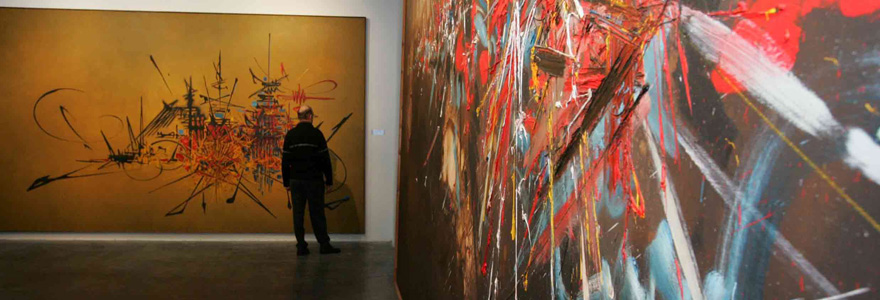
The journey of George Mathieu started in the city of Osaka in September of 1957. His art skills were appreciated by many people. Georges Mathieu used paintbrushes with some energy. It quickly amazed most people. He knelt and used his bare hands to paint. It was a marvel to most of his spectators. George Mathieu’s paintings were short, abrupt and explosive. After painting, he would step back and quickly look at his painting before moving back to the painting to make some new changes.
Mathieu George had a painting called Hommage that is six meters long and was painted in front of an audience. The live Audience was on a rooftop at a department store in Daimaru. One of the best works of Mathieu George was a painting he did in 1967 called Air de France that had taken an entire wall. It was of sheer size and had a blue background. Each time you look at the painting, you will fall more in love with it. In Estades.com in France, it is hard for an auction to take place without the works of Mathieu George being involved.
The technical process of Mathieu’s paintings in 1950
The Estades after 1950 is when his work started to be recognized. His artistic language had developed by this time. In the 1950s, he spent most of his time moving to different parts of the world to showcase his talent. Mathieu moved from his first solo exhibition in France in 1950 to start his traverse of the world in 1952. In 1952 he went to Stable Art Gallery New York for his first tour exhibition. The following year, he started receiving international recognition that pushed him to continue with his works. He is credited with pioneering Lyrical Abstraction. As the years progressed, his confidence reached a new peak, as it could be seen in the sharpness and speed he used to take when painting his paintings. It is when he started his performative practice. He would paint as crowds of people watched him. He would do this with the company of musicians, dancers, and martial artists. He performed in front of people while, other times, he performed in front of cameras. 1957 would be a pivotal year of Mathieu George as he travelled to three cities in Japan within three weeks. In Tokyo, he made 21 canvases in just three days. In Osaka, he made six canvases in just one day. He travelled to cities in Belgium, US, Italy, Sweden, and Switzerland.
The golden decade of success
The golden decade of success started when Mathieu’s philosophies were fully established. His artistic and pictorial language having improved made Mathieu succeed. What helped Mathieu reach free creativity by the 1960s was the improvement of his skills in speed. The way he was able to convey his art and canvas was filled with a trace of actions that were fast and violent. The speed he used while the painting was not the only component that propelled him to success. The paintings required that he used his body energy to come up with the best of his artistic designs. It also required, a lot of concentration due to the high speed he used while painting. He enjoyed the canvas and the painting where he showcased some kind of energy. At the point of rupture, he would loosen up leading to some sense of equilibrium in his paintings. All this made him gain popularity across France, where he designed posters for Air France, stamps, and the 10-franc coin. During this time is when his career was at its peak levels.
His Mature Years
During his final years, his paintings were some of his extraordinary works. His works during this time showed some maturation from the paintings he did back in the 1960s. That is why he was able to secure his place in art history. At the time he answer questions he posed to himself back when he was younger. By this time he had stopped using the aggressive energy to now use deliberate force to execute his artwork. Although his mastery was never in question, his works when he was younger would have empty spaces. Some of his techniques were put into use on a single canvas. It included the introduction of the dripping technique that was not used during the time he was younger. Most of his paintings were named after battles, places or famous historical individuals. By naming his paintings this way he showed us his areas of interest. His paintings were able to bring out some emotions with the canvas fibres and paint layers. His paintings continue to be viewed in France.